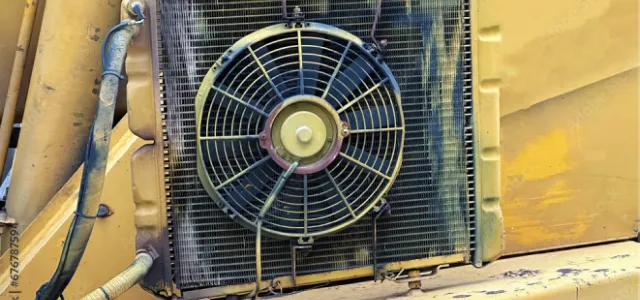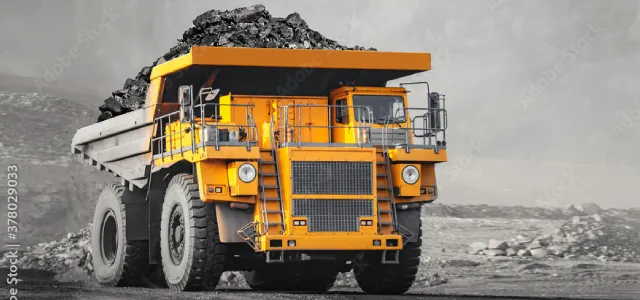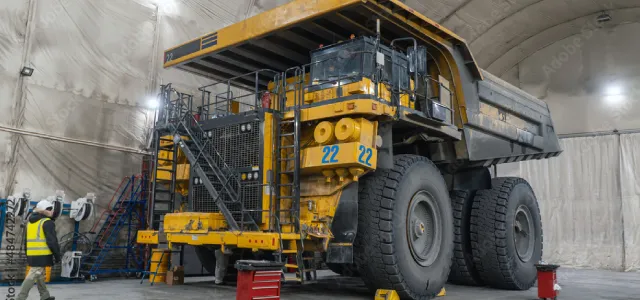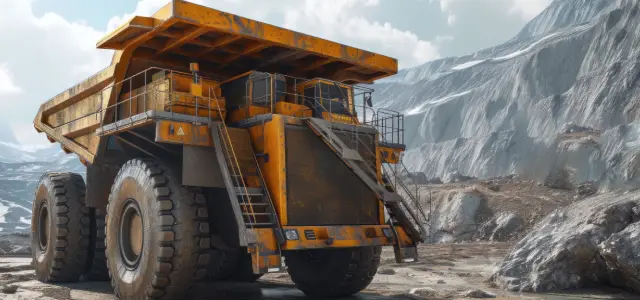about
Drilling & Mining Equipment
In mining industries, vehicles such as haul trucks, excavators, and loaders often operate in extreme conditions. These vehicles require robust cooling systems to maintain optimal engine performance and prevent overheating, which is where radiators play a crucial role. Here’s a detailed look at the working principles of radiators in vehicles used in mining industries:
Purpose of the Radiator
- Engine Cooling: Mining vehicles operate under heavy loads and high ambient temperatures. Radiators prevent the engine from overheating by transferring excess heat from the engine coolant to the surrounding air.
- Efficiency and Longevity: Maintaining proper engine temperature ensures efficient performance and extends the lifespan of the engine and other components.

Working Principle of a
Radiators in Mining Vehicles
Heat Absorption
- Coolant Circulation: The engine uses a coolant (a mix of water and antifreeze) to absorb heat generated during operation. The coolant circulates through the engine, picking up heat from internal components such as the engine block and cylinder heads.
- Hot Coolant: The heated coolant exits the engine through the radiator inlet, carrying the absorbed heat.
Heat Transfer in the Radiator
- Radiator Core: The radiator core consists of a series of thin tubes and fins. The tubes are designed to carry the hot coolant, while the fins help increase the surface area for heat dissipation.
- Coolant Flow: Hot coolant flows through the tubes in the radiator core. The design of the core ensures that the coolant comes into contact with a large surface area of metal.
Cooling Medium
- Airflow: Airflow is crucial for cooling. The radiator is equipped with fins that enhance the heat transfer from the coolant to the air. A fan, which can be engine-driven or electrically powered, blows air across the fins to facilitate this process.
- Heat Dissipation: As the coolant flows through the tubes, the heat is transferred to the metal fins. The fan blows air over these fins, which carries away the heat from the radiator, cooling the coolant in the process.
Return of Cooled Coolant
- Coolant Outlet: The now-cooled coolant exits the radiator through the outlet and is pumped back into the engine. This continuous cycle of heating, cooling, and recirculating coolant maintains the engine at a safe operating temperature.
Temperature Regulation
- Thermostat: A thermostat regulates the temperature of the coolant. It controls the flow of coolant through the radiator, opening and closing as needed to maintain the engine at an optimal temperature.
- Pressure Cap: The radiator is equipped with a pressure cap that maintains the pressure in the cooling system. This helps increase the boiling point of the coolant, preventing overheating.
Components of Radiators in Mining Vehicles
Radiator Core
Contains tubes and fins for heat transfer.
Fan
Assists in drawing air across the radiator fins to enhance cooling.
Thermostat
Regulates the flow of coolant based on temperature.
Pressure Cap
Maintains pressure in the cooling system.
Benefits of Proper Radiator Functioning
Prevents Overheating
Ensures that the engine remains within its optimal temperature range, preventing overheating and potential damage.
Maintains Performance
Keeps the engine operating efficiently, which is crucial for heavy-duty mining applications.
Extends Equipment Life
Reduces wear and tear on the engine and other components by managing temperature effectively.
Challenges and Considerations in Mining Vehicles
Extreme Conditions
Mining environments can be harsh, with high temperatures, dust, and debris. This can affect radiator performance and longevity.
Dust and Debris: Dust and debris can clog the radiator fins, reducing airflow and cooling efficiency. Regular cleaning and maintenance are essential.
High Temperatures: Vehicles often operate in high ambient temperatures, requiring efficient heat dissipation.

Heavy Loads
Mining vehicles operate under heavy loads, which increases the heat generated by the engine.
Enhanced Cooling: Radiators in mining vehicles are often larger and designed to handle higher thermal loads to cope with the increased heat.

Maintenance
Regular maintenance is critical to ensure reliable operation.
Inspection: Periodic inspections for leaks, damage, and corrosion are necessary.
Cleaning: Regular cleaning of the radiator and surrounding areas helps maintain cooling efficiency.

Durability
Radiators used in mining vehicles need to be robust and durable to withstand the harsh operating conditions.
Material Selection: Radiators are typically made from materials resistant to corrosion and wear.

In summary, radiators in mining vehicles are designed to handle extreme conditions and high thermal loads. They work by transferring heat from the engine coolant to the air, aided by a fan and efficient radiator core design. Proper maintenance and understanding of the radiator's role are essential for ensuring the reliable operation of mining vehicles. If you have any more questions or need additional details, feel free to ask!
Testimonials
Recently we bought a Radiators for our Generator. The Product Quality is Excellent .This Company produces custom made Radiators and Spares too. High Quality Products and Service Support.
krishna
CLEANTEK
We got support from ark engineering wonderful work done.He given idea for money save in genset. Ark engineering owner wonderful person.i will strongly recommend to ark engineering.
R.Prasannavenkatesh
Laser Experts India
Coimbatore
We have taken the services of the ark engineering for the service of our genset radiators.it was great Service at a better price .really professional and technical.
Suresh V
FAQ'S
What role does the radiator play in drilling and mining equipment?
The radiator helps to cool the engine and hydraulic systems, preventing overheating during heavy-duty operations.
Why is cooling important in mining and drilling equipment?
Cooling is crucial to maintain optimal performance and prevent equipment failure in high-temperature conditions.
How often should radiators in mining and drilling equipment be maintained?
Radiators should be inspected and cleaned regularly to ensure efficient cooling and prevent clogging or damage.